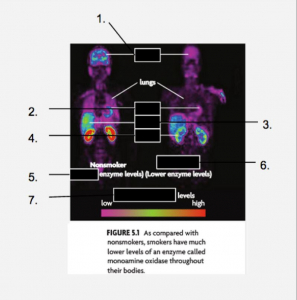มีข้อกำหนดอะไรสำหรับส่วน Reading ของ IELTS ?
ส่วนที่สองของการสอบข้อเขียนของ IELTS คือ Reading. ถ้าคุณได้พัฒนาวิธีการดีอยู่แล้ว ส่วนนี้สามารถช่วยให้คุณได้คะแนนง่าย. ในส่วนนี้ มีข้อเรียกร้องให้หาคำในข้อความ 3 ข้อ เพื่อสามารถตอบคำถาม 40 ข้อ ได้. คุณไม่ต้องเดาหรือสร้างคำโดยด้วยเอง ข้อเรียกร้องคาดหมายให้คุณหาคำที่ต้องการอย่างรวดเร็ว.
เพื่อสามารถสอบส่วนที่เคร่งครัดนี้ GlobalExam ช่วยให้คุณฝึกหลายร้อยชั่วโมง. นอกจากนั้น มีการสอบในสถานการของส่วน Reading เอง โดยทางการเตรียม IELTS ออนไลน์.
ความคิดเพิ่มเติม: มีความแตกต่างที่เดียวระหว่าง IELTS Academic – Reading และ IELTS General Training – Reading นั้นคือ : ลักษณะของข้อความ. คำแนะนำของเราจึงเป็นประโยชน์สำหรับผู้สมัครทุกคน.
วิธีออกแบบของส่วน Reading เป็นอย่างไรบ้าง ?
กรอบต่อไปนี้แสดงให้เห็นวิธีออกแบบของส่วน Reading.
| IELTS ส่วน Reading | วิธีออกแบบ |
|---|---|
| ประกอบด้วย | - ส่วน Reading ประกบด้วยอีก 3 ส่วนที่เป็นข้อความ 3 ข้อ ซึ่งจะพิจารณาโดยเพิ่มความยากเรื่อย ๆ. - ข้อความออกมาจากหนังสือ หนังสือพิมพ์ หรือวารสาร. หัวข้อของข้อความเหล่านั้นเป็นเรื่องธรรมดา (เชิญลงไปดูหัวข้อของการสอบในบทความ : “มารู้จักการสอบ IELTS”). - คุณมี 1 ชั่วโมง เพื่อตอบคำถาม 40 ข้อ ที่ถามไว้. เราแนะนำให้คุณใช้เวลา 15 นาที กับข้อความแรก 20 นาที กับข้อความที่ 2 และ 25 นาที กับว่าบทสุดท้าย. |
| คำถาม | - จะต้องตอบคำถาม 40 ข้อ ที่อาศัยการฝึกซ้อมหลายอย่าง (คำถามแบบหลายทางเลือก การเพิ่มข้อความ หาคำถามที่เหมาะสมกับคำตอบ เพิ่มแผนภูมิ...). - คำตอบที่ถูกต้องแต่ละข้อทำให้มีคะแนน 1. ไม่มีคะแนนลบ. - คำตอบทั้งหมดอยู่ในข้อความ. |
| แผ่นคำตอบ | - คุณต้องใช้แผ่นที่ได้รับในเริ่มต้นของการสอบ |
เผ่นคำตอบตัวอย่างหนึ่ง ของส่วน Reading ซึ่งมาจากเว็บไซต์ของ IELTS.
ต่อไปนี้ เชิญพบตัวอย่างของข้อเรียกร้องของการฝึกซ้อมแต่ละข้อ โดยเพิ่มความยากเรื่อย ๆ:
– IELTS Reading – การฝึกซ้อม 1
– IELTS Reading – การฝึกซ้อม 2
– IELTS Reading – การฝึกซ้อม 3
- Reading ข้อความ 1 (คำถาม 1 จน 12)
TEXT: BIOLOGY AND YOUR HEALTH
A What you eat and drink is directly related to your health. But you may not think twice about the possibility of contaminated food or water, or a lack of vitamins in your diet. Not long ago, diseases caused by vitamin deficiencies were still fairly common. The first vitamins were identified less than 100 years ago, but today the vitamins found in foods are printed on labels.
B Even today we still face food-related causes of illness. For example, you might hear about an outbreak of food poisoning, and mad cow disease was only recognized in the late 1980’s. Of perhaps greater concern to you are food allergies. Many people suffer from severe, even life threatening, allergies to foods such as peanuts and shellfish. Beyond questions about the sources of food are questions and concerns about what people eat and how much they eat. For example, scientists estimate that more than 60 percent of adults in the United States are overweight or obese. The health consequences of obesity include increased risks of diabetes, stroke, heart disease, breast cancer, colon cancer and other health problems. Biology can help you to better understand all of these health-related issues.
C An understanding of biology on many different levels –genetic, chemical, and cellular, for example — can help you make any number of lifestyle choices that affect your health. Why is it important to use sunscreen? What are the benefits of exercise? What are the effects of using alcohol, illegal drugs and tobacco? Cigarette smoke does not just affect the lungs; it can also change a person’s body chemistry and have strong negative effects on the kidneys. Non smokers normally have a normal enzyme level, while smokers have lower enzyme levels. Lower levels of monoamine oxidase in the brain can affect mood, and lower levels in the liver could contribute to high blood pressure.
Biology and the World Around You
D In 1995, some middle school students from Minnesota were walking through a wetland and collecting frogs for a school project. The students stopped to look at the frogs and what they saw shocked them. Many of the frogs had deformities, including missing legs, extra legs, and missing eyes. What caused the deformities? Scientists investigated that question by testing several hypotheses. They studied whether the deformities could have been caused by factors such as a chemical in the water, ultraviolet radiation, or some other type of infection.
E Why would frog deformities such as that provoke such scientific interest? The frogs are a part of an ecosystem, so whatever affected them could affect other species in the area. If the deformities were caused by a chemical in the water, might the chemical pose a risk to people living in the area? In other regions of the United States parasites caused similar deformities in frogs. Might that parasite also be present in Minnesota? If so, did it pose a risk to other species?
F At first, parasites were not found in the frogs. However, scientists now suggest that the frog deformities were due to a combination of infection by parasites, called trematodes, and predation by dragonfly nymphs. Science has answered some questions about the cause of the leg deformities. However, scientists now think that a chemical may be connected to the increased number of parasite infections.
G Suppose that the chemical comes from a factory in the area. Is it reasonable to ban the chemical? Should the factory be closed or fined? In any instance like this, political, legal, economic, and biological concerns have to be considered. What is the economic impact on the factory on the area? Is there any evidence of human health problems in the area? Is there a different chemical that could be used? Without an understanding of biology, how could you make an informed decision related to any of these questions?
H These are the types of questions that people try to answer every day. Biologists and other scientists research environmental issues such as pollution, biodiversity, habitat preservation, land conservation, and natural resource use, but decisions about the future are not in the hands of scientists. It is up to everyone to make decisions based on evidence and conclusions from many different sources.
คำถาม 1 – 7
Label the missing words on the diagram below using words from the following paragraph from the text :
An understanding of biology on many different levels –genetic, chemical, and cellularm for example — can help you make any number of lifestyle choices that affect your health. Why is it important to use sunscreen? What are the benefits of exercise? What are the effects of using alcohol, illegal drugs and tobacco? Cigarette smoke does not just affect the lungs; it can also change a person’s body chemistry and have strong negative effects on the kidneys. Non smokers normally have a normal enzyme level, while non smokers have lower enzyme levels. Lower levels of monoamine oxidase in the brain can affect mood, and lower levels in the liver could contribute to high blood pressure.
Write your answers in boxes 1 – 7 on your answer sheet.

คำถาม 8 – 12
This passage has eight sections, A-H.
Choose the correct heading for sections B, C, E – G and from the list of headings below.
Write the correct number i-ix in boxes 8-12 on your answer sheet.
|
List of Headings i Potential Risks on an Ecosystem ii Domestic Animals at further risk iii Negative Effects of Smoke iv Biologists asking questions v Arthritis and Brain Cancer in young Americans vi Consequences of American Habits vii Local taxpayers want a solution viii Nymphs and trematodes affecting local frog population ix Factory Workers are taking care of environment problems |
- ส่วน B __________
- ส่วน C __________
- ส่วน E __________
- ส่วน F __________
- ส่วน G __________

กลยุทธ์ของ GlobalExam
กลยุทธ์เพื่อที่จะสามารถเข้าหน้าคือ เข้าใจและจำข้อเรียกร้อง 11 ข้อ ที่ใช้บ่อย ๆ ในส่วนนี้. ข้อเรียกร้องเหล่านั้นพบได้ในกรอบต่อไปนี้.
| คำถามข้อได | คำอธิบายและคำแนะนำ |
|---|---|
| Multiple choice (QCM) | คำตอบที่ถูกต้อง 1 หรือหลายข้อ (ตามปกติมีทางเลือกสี 4 ข้อ: A B C หรือ D). คำถามออกมาตามลำดับของข้อมูลในข้อความ. |
| True/False/Not given Yes/No/Not given | "True", "Yes" = โดยอาศัยข้อมูลของข้อความ ถ้อยคำที่ใช้ในคำถามมีเหตุผล. "False", "No" = ข้อมูลในข้อความคัดค้านถ้อยคำที่ใช้ในคำถาม. "Not given" = ข้อมูลในข้อความไม่สามารถสนับสนุนหรือคัดค้านถ้อยคำที่ใช้ในคำถาม. ขอเอาใจใส่! อย่าตอบว่า "Yes/No" ถ้ามีข้อเรียกร้องให้ตอบ "True/False" คุณจะไม่รับคะแนน |
| Matching information Matching features | หาวรรคที่เกี่ยวข้องกับคำตอบเป็นพิเศษ (“Men, discovered fire 790,000 years ago“ > “The key to human growth and development“). เป็นไปได้ว่า มีคำตอบจำนวนสูงกว่าวรรค (วรรค 5 ข้อ สำหรับคำตอบ 7 ข้อ) เป็นไปได้ว่า มีวรรคหนึ่งข้อหรือวรรคลายข้อ ที่ไร้ประโยชน์. |
| Matching headings | หาหัวข้อของวรรค (วรรค B > หัวข้อ ii : “The keys to human growth and development“). หัวข้อมีหมายเลขโรมัน (i ii iii iv v…) ส่วนวรรคมีตัวอักษร (A B C D E…). เป็นไปได้ว่า มีหัวข้อจำนวนสูงกว่าวรรค (วรรค 5 ข้อ สำหรับหัวข้อ 7 ข้อ) เป็นไปได้ว่า มีวรรคหนึ่งหรือหวรรคลายข้อ ที่ไร้ประโยชน์. |
| Matching sentence endings | เพิ่มจุดเริ่มต้นของประโยคที่มีในข้อเรียกร้อง เป็นไปได้ว่า ส่วนแรกของประโยคมีจำนวนสูงกว่าส่วนสุดท้าย (ส่วนแรก 7 ข้อ สำหรับส่วนสุดท้าย 4 ข้อ). ส่วนแรกของประโยคออกมาตามลำดับของข้อมูลในข้อความ. |
| Sentence completion | หาถ้อยคำที่เกี่ยวข้องกับข้อมูลที่ขาด (ในข้อความ). เป็นไปได้ว่า จำนวนถ้อยคำที่เสนอไว้สูงกว่าข้อมูลที่ขาด (ถ้อยคำ 6 ข้อสำหรับข้อมูลที่ขาด 4 ข้อ). ระวัง! ถ้อยคำมีจำนวนจำกัด (“No more than 2/3 words“) ! |
| Summary/note/table/flow chart completion | เพิ่มการสรุปของข้อความโดยใช้คำศัพท์ของข้อความเอง. การสรุปอาจจะอยู่ในรูปแบบของข้อความ ความคิดเห็น กรอบ... คำตอบไม่ออกมาตามลำดับของข้อความ แต่ ตามปกติพวกมันอยู่ในวรรคเดียวกัน. |
| Diagram label completion | เพิ่มลักษณะของแผนภูมิโดยใช้ถ้อยคำจากข้อความ. แผนภูมิอาจจะเป็นเครื่อง อาคาร หรือข้อมูลอะไรก็ได้ที่ใส่ในแผนภูมิได้. ระวัง! ถ้อยคำมีจำนวนจำกัด (“No more than 2/3 words“) ! |
| Short-answer questions | ตอบคำถามโดยตรงโดยอาศัยข้อมูลจากข้อความ. ระวัง! ถ้อยคำมีจำนวนจำกัด (“No more than 2/3 words“) ! คำประสมเช่น check-in นับว่าคำเดียว. |
การจับเวลาอย่างฉลาดสุขุมเป็นกลยุทธ์ที่ช่วยให้ผ่านส่วน Reading ด้วย. คุณมีเวลา 1 ชั่วโมงเพื่อตอบคำถาม 40 ข้อ และคุณสามารถจับเวลาตามใจ. เนื่องจากลำดับของข้อความมีการเพิ่มความยากเรื่อย ๆ และส่วนสุดท้ายมีคำถามมากกว่า พวกเราแนะนำให้คุณใช้เวลา 15 นาที ในข้อความแรก 20 นาที ในข้อความที่สอง และ 25 นาที ในข้อความสุดท้าย.
คำแนะนำของ GlobalExam
- คำแนะนำข้อที่ 1: จริงอยู่มันชัดเจน แต่ อ่านข้อเรียกร้องแต่ละข้ออย่างดี.
ข้อเรียกร้องของการฝึกซ้อมไม่เหมือนกัน และ คุณจะไม่ได้คะแนนถ้าคำตอบของคุณไม่ครอบชุด หรือ ไม่ถูกต้องอย่างเต็มที. ยกตัวอย่าง : ถ้ามีข้อเรียกร้อง “Answer Yes, No or Not Given“, คุณต้องตอบอย่างชัดเจนว่า “Yes” ถ้าโดยอาศัยข้อมูลของข้อความ คำที่ใช้ในคำถามมีเหตุผล. “No” ถ้าข้อมูลในข้อความคัดค้านถ้อยคำที่ใช้ในคำถาม. “Not Given” ถ้าข้อมูลในข้อความไม่สามารถสนับสนุนหรือคัดค้านถ้อยคำที่ใช้ในคำถาม. ระวัง! อย่าตอบว่า: “Not Given” เพราะคุณมีข้อสงสัย. ค้นหาส่วนที่มีคำตอบในข้อความแทน.
- คำแนะนำข้อที่ 2: มีเวลาจำกัดเพื่อตอบคำถาม 40 ข้อ. อย่าใช้เวลามากกว่า 3 นาที กับคำถาม ที่หาคำตอบยาก.
ถ้าคำถามยาก ยกเลิกดีกว่า จะสามารถกลับมาสู่คำถามข้อนั้นในภายหลัง. อย่าเสียเวลาเลย !
การฝึกฝนออนไลน์ทาง GlobalExam
GlobalExam เป็นโครงสร้างออนไลน์ที่ช่วยให้ฝึกสำหรับการสอบภาษา ในสถานการณ์ของการสอบเอง: มีคำถามพิเศษ การจับเวลาการแก้ไขที่ละเอียด เพื่อช่วยให้คุณกัาวหน้าและรู้จักตัวเอง. มีแผ่นหลักภาษาและคำศัพท์ด้วย.
จะรู้เพิ่มเติมเกี่ยวกับส่วนนี้โดยอ่านแผ่น ส่วนอื่น ๆ ของ IELTS :
– ส่วน Writing
– ส่วน Listening
– ส่วน Speaking
เชิญสมัคร และ ทดสอบระดับของคุณฟรี!
บทความอื่น ๆ ที่คุณอาจจะสนใจ:



